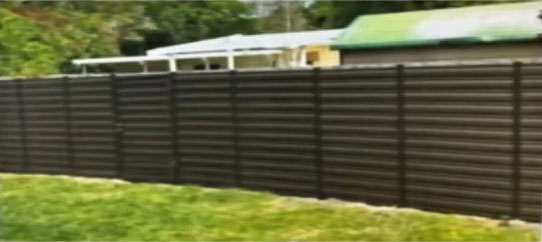
Wellington’s architectural gatekeepers continue to back the village’s traditional look on fencing around homes, but discussions have not completely shut the door on different materials and styles in the future.
Take the case of a proposed six-foot brown galvanized steel fence on the sides and rear of a house on Jonquil Place, a request that came before Wellington’s Architectural Review Board on Wednesday, May 22.
“I guess I can see, if you want to call them plusses and minuses, or just different views in reference to the durability and that side of it all, it definitely does sound like a good thing,” ARB Chair Stacy Somers said. “Then the flip side, just thinking about the neighborhood, Wellington being all about nature and stuff, that’s the majority of why it has always been the wood fences.”
Steel fences are not common in the Sugar Pond Manor neighborhood, “so it definitely would be a different aesthetic look,” Somers said.
The debate ultimately ended in a 6-0 vote not to approve the fence, but conversations ventured into speculation about what might work down the line.
Board Member Miguel Alonso observed, “you might have better luck getting it past the board” if the steel components had a flatter, more wood-like appearance.
Village staff explained that some steel fences have been approved because of their durability in situations such as conduits for horses. In residential settings, though, it was noted that some steel fences can resemble hurricane shutters.
It’s the kind of judgment call that can affect the perceptions of residents and prospective buyers and, for all anyone knows, have an inscrutable butterfly-wing effect on billions of dollars of property values in a community like Wellington. Shutters do many useful things, but can carry connotations of a locked-up, checked-out neighborhood. For instance, some homeowners’ associations do not allow shutters to remain up indefinitely, such as when a seasonal resident is away.
The house in question is a single-family residence with a pool, built in 1984. The steel fence was not on the village’s approved list, and Wellington’s staff recommended against it, as a departure from the standard village aesthetic, typically wood or vinyl-coated chain link fencing fronted by hedges. An online village summary also mentions PVC and aluminum railing as acceptable under various conditions.
A family member speaking for the applicants said the steel fence is galvanized, so it won’t rust any time soon. It is also engineered to Miami-Dade County code to withstand severe hurricane winds. The family was willing to install planks vertically or horizontally, as the village wished, but preferred the latter. Staff favored the horizontal, if it came to that.
The applicants signaled that they were willing to put hedges equal to the fence height in front of the portions visible from the street, and work with neighbors to coordinate with their own fencing.
A big complication, board members said, is that approvals can imply standards for the larger community.
“Even if it’s an individual that’s asking about it, we’re also thinking about the whole neighborhood,” Somers said.
Board Member Jeff Browning said there is another layer to the whole conversation. New homes approved for construction near the entrance to the Palm Beach Polo community on Forest Hill Blvd., for example, feature a modern look with a combination of glass, metal, stucco and composite materials.
“This fence wouldn’t look bad, would it, with those new homes that are going into Polo?” he said.
In other business:
- The board unanimously approved updated plans for Wellington Bay, a 46-acre congregate living facility project near the Mall at Wellington Green. Phase 2 of its plans would start construction in 2025 and feature a six-story building with an extended wing overlooking water areas, three one-story villas, and a three-story building. It is designed to serve people needing medical care and rehabilitation in a residential setting.
- The board also unanimously approved the latest elevations, colors and materials for the planned new Wellington Aquatics Complex at Village Park. These back the Wellington Village Council’s expressed wishes for details such as wood-like paneling in the entrance façade to achieve more of a resort feel and less of an institutional look. There was a mix of grumbles and support for orange and blue colors associated with the University of Florida.







